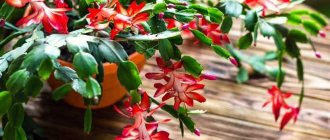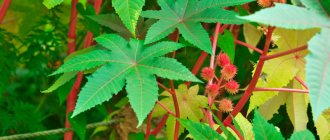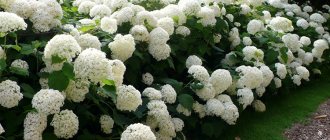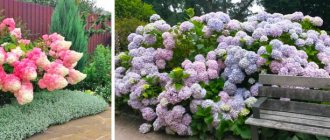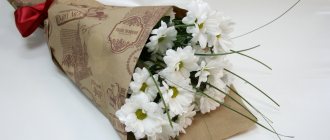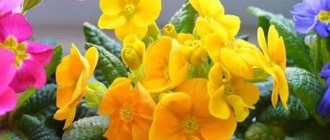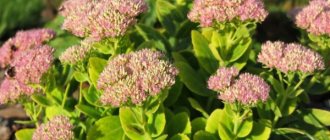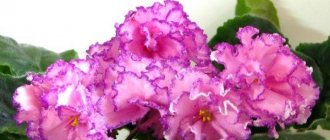Author: Elena N. https://floristics.info/ru/index.php?option=com_contact&view=contact&id=19 Category: Garden plants Published: February 21, 2019Last edits: November 07, 2020
- When to plant
- Growing conditions
- Nemesia floribunda
Nemesia (lat. Nemesia) is a genus of herbaceous plants and shrubs of the Norichnikov family, which includes approximately 50 species of annuals and perennials, most of which grow in the bush and coastal regions of South Africa. The plant received its scientific name in honor of the Greek goddess of retribution, Nemesis.
Planting and caring for nemesia
- Flowering: from June to frost.
- Planting: sowing seeds for seedlings - at the end of March, planting seedlings in open ground - at the end of May or early June.
- Lighting: bright sunlight.
- Soil: well-drained, moderately moist, neutral or slightly acidic soil of average fertility.
- Watering: regular, moderate, in hot weather and drought - more frequent and abundant.
- Fertilizing: 2-3 times per season with complex mineral or liquid organic fertilizers.
- Pinching: regular.
- Reproduction: seed.
- Pests: spider mites.
- Diseases: with excessive watering - fungal infections.
Read more about growing nemesia below.
Planting rules: step-by-step instructions
Before planting seeds, you need to carry out preparatory work.
First of all, prepare the soil. You can purchase it at a specialty store or prepare it yourself. To do this, mix soil, sand, compost and rotted humus in equal parts. All these components make the soil loose and nutritious.
Before sowing, the seeds do not require additional processing. They are mixed with sand (since they are very fine), which will allow them to be evenly distributed when sowing.
Suitable containers:
- peat pots;
- plastic flowerpots;
- cups.
The container must have holes at the bottom so that the roots can receive enough air.
Step-by-step instructions for planting seeds:
- Pour expanded clay onto the bottom of the pot.
- Fill the container 2/3 with soil.
- Using a damp pencil or stick, plant the seeds, deepening them into the soil.
- Sprinkle with a thin layer of earth.
- Water the seedlings.
- Cover the pots with film.
The optimal temperature for keeping seedlings is +20°C.
Botanical description
The nemesia plant reaches a height of 30 to 60 cm. The stems of nemesia are tetrahedral, branched, sometimes pubescent, bending over time under the weight of the inflorescences and linear or lanceolate, opposite, serrated along the edges of the leaves. Numerous axillary flowers, solitary or collected in apical inflorescences, consist of a tubular corolla with labiform limbs: the upper quadripartite and the lower dicotyledon. The color of the flowers is varied.
The fruit is a capsule with a large number of black elongated seeds in whitish arils. Nemesia seeds remain viable for up to 2 years.
Despite the fact that garden nemesia is represented by both annual and perennial species, in temperate climates it is grown as an annual crop.
- Hydrangea paniculata
Possible problems in growing
Nemesia practically does not get sick; all possible problems arise due to improper care.
You may be interested in: Jasmine - a delicate aroma and a natural healer
Monarda - how to grow garden bergamot
Buddleia or autumn lilac - growing rules
Diseases
Most often, the gardener has to confront:
- root rot;
- powdery mildew.
To prevent diseases, you need to adjust the watering regime, ensure good drainage and regularly loosen the soil.
Growing nemesia from seeds
Sowing seedlings
Nemesia is planted by seeds, cuttings and dividing the bush, but since the long roots of the plant are easily damaged when dividing, it is best to grow nemesia by seed seedlings.
Seeds purchased in a store or collected with one’s own hands are sown at the end of March in seedling containers filled with a loose, moisture-intensive substrate for flower crops, or in a mixture of peat and sand, on which a layer of snow is laid: on white snow, small black seeds are clearly visible and are easier to distribute over surfaces evenly.
The crops are covered with glass or transparent film and kept in a bright place at a temperature of 20 ºC, ventilated daily. The first shoots of nemesia should appear in 10-14 days.
Seedling care
With the beginning of mass germination of seeds, the container with the crops is exposed to bright, diffused light, and the temperature is lowered to 8-10 ºC. This is done so that the nemesia seedlings do not stretch. A week after the emergence of seedlings, the soil is watered with a solution of complex fertilizer in a weak concentration. Caring for seedlings consists of watering and carefully loosening the soil.
3-4 weeks after sowing, at the stage of development of the seedlings with two or three true leaves, the seedlings are planted in separate cups or pots, and the room temperature is maintained at 13 ºC. Make sure that the substrate in the cups does not dry out. Two weeks before planting in the garden, seedlings begin to harden.
Growing nemesia at home
Actually, nemesia is grown at home only during the seedling period, and then it is planted in open ground or transferred to a balcony or veranda.
- How to feed plants - simple or complex fertilizers, and how to avoid mistakes when choosing?
How to grow nemesia for landscaping a balcony, veranda or terrace? If you do not intend to keep nemesia in the garden, you can sow the seeds in February. The planting procedure and maintenance conditions are absolutely the same as for seedlings, but instead of picking into cups, nemesia is planted in containers or pots, which, when warmer, are taken out to the balcony, veranda or terrace.
When to plant seeds
The flower should be planted in early March so that it blooms in early summer. When planting nemesia in a cold region, the timing can be shifted by a month, that is, the seedlings can be planted in April. In the southern regions, planting can be shifted to February.
If the situation is favorable, the seeds will sprout 10 days after planting . After 20 days, you can get full sprouts. This data can be used to determine when to plant seeds.
Moon calendar
The moon affects plants and can affect the quality of the harvest. If you plant seeds on days favorable according to the lunar calendar, then nemesia will be lush, healthy and will become a real decoration of the flowerbed.
Favorable dates:
- March - 8–14, 17, 23–25;
- April - 7–13, 16, 22–24;
- May - 7–13, 16, 22–24.
A favorable planting day will not guarantee a good result if the rules for caring for the plant are not followed.
Planting nemesia in open ground
When to plant
Nemesia seedlings are planted in open ground after warm weather has established, when the threat of frost has passed: at the end of May or at the beginning of June. An open, ventilated, sunny area with well-drained, moist soil of average fertility with a neutral or slightly acidic reaction is suitable for nemesis. Nemesia also grows well in light lacy partial shade.
How to plant
To plant seedlings, prepare holes of such depth that the root system of the seedling along with a lump of earth can fit in them. The distance between plants should be 20-30 cm, since nemesia bushes slightly fall apart. After planting and embedding, the seedlings are watered, and after the water is absorbed, the area is mulched to protect the soil from rapid evaporation of moisture.
Nemesia from seeds will bloom in late June or early July.
Methods for propagating sansatia
Most wild nemesia species are perennials. This property is actively used by gardeners for vegetative propagation. Since the root system of this plant is very delicate, dividing the bush is used extremely rarely. The slightest damage to the main root and cuttings will cause long-term stress after transplantation.
But cuttings are used quite often. The popularity of this method of propagation is explained simply - when the cuttings are separated from the mother plant, their varietal qualities are completely preserved. During seed propagation, cultivars often degenerate; they change color and become smaller.
Therefore, it is preferable to grow seedlings every year and use cuttings to replenish your plantation. They take root quite easily in water and are grown in separate containers. Cuttings provide another pleasant bonus - earlier flowering.
Remember! Seed propagation allows you to grow the desired color range of sansatias for the garden. But when collecting seed from your bushes, be prepared for a change in the color of the petals.
Caring for nemesia
Growing conditions
Planting and caring for nemesia is not labor intensive. In order for the plant to bush, the tops of its shoots are regularly pinched. During the season, you will have to water the nemesia, especially in dry weather, weed the weeds and loosen the soil around the bushes.
Nemesia flowers are fed 2-3 times during the season with complex mineral fertilizer, for example, Kemira Lux. Nemesia favorably accepts in open ground and organic fertilizers.
Pests and diseases
Due to the fact that nemesia loves moisture very much, it is susceptible to fungal diseases. To avoid damage to nemesia by fungi, water the plant moderately, allowing the top layer of soil to dry out, but if the plant still becomes sick, treat it with a fungicide solution.
- How to care for spirea in open ground
Among insects, nemesia in open ground can suffer from spider mites that feed on the cell sap of plants, and if you find the thinnest sticky web on the bushes or drying and falling leaves, take immediate action: treat the plants and the soil around them with a solution of Akarina, Actellika, Karate, Fitoverma or any other acaricide.
Nemesia after flowering
When the first wave of flowering has subsided, the ends of the shoots of nemesia with faded inflorescences should be cut off, and soon, with proper care, new shoots will appear from the axils of the leaves, which will bloom after a while.
Diseases and pests
Powdery mildew
If care conditions are not met, there is a risk of rot, blackleg or powdery mildew. The first signs of “uninvited guests” are the appearance of uncharacteristic black and brown spots. Many gardeners also note an unpleasant odor. Primary aid is to remove all damaged fragments. Next, you should spray the remaining parts with a special chemical - a fungicide. If the plant is bothered by spider mites, then treatment with Actellik will get rid of the insect.
Types and varieties
Among the types of nemesia, there are those that are best grown in the garden, and there are types that can be used to decorate balconies and terraces. We present to you the most popular types and varieties of nemesia in gardening.
Nemesia floribunda
This is a plant reaching a height of 40 cm, the shoots of which are crowned with delicate small pale blue flowers. This species, unfortunately, can rarely be found in culture, although interest in it has been growing over the years.
Nemesia versicolor
A South African species of annual plants with highly branched thin stems up to 25 cm high and medium-sized flowers. Nemesia variegated served as the basis for the development of many hybrids. The most famous varieties:
- Blue Bird is a plant with bright blue flowers with a yellow or white spot on the lip;
- Edelblau - the flowers of this variety are the same color as those of the forget-me-not.
Nemesia strumosa
It is a highly branched annual 35-40 cm high with oval sessile lower leaves and linear upper leaves. The flowers of plants of this species are irregularly shaped, swollen, without spurs, up to 25 mm in diameter, with a drooping throat, red, pink, orange or yellow in color, there are varieties with variegated flowers. The species has been in cultivation since 1892.
The best varieties of the species are:
- Aurora is a plant up to 30 cm high with large scarlet-white flowers;
- Fanfair - a variety with cream and yellow flowers;
- Sparklers - nemesia with two-three-color flowers;
- Fire King - a variety up to 30 cm high with fiery red flowers;
- National Ensign is a well-known variety with red and white flowers.
Hybrid nemesia (Nemesia hybrida)
It combines all varieties of hybrid origin from crossing Nemesia zombie and Nemesia variegated. As a rule, these are annuals from 30 to 60 cm in height with elongated, almost lanceolate leaves, crenate along the edge. Irregularly shaped, large flowers up to 2 cm in diameter with a two-lipped corolla are collected in apical racemose inflorescences.
Hybrid nemesia usually goes on sale in variety mixtures that differ in plant height. For example:
- nemesia Triumph - varieties of various colors up to 15 cm high;
- nemesia Carnival - plants 18-20 cm high in various colors.
Some popular varieties of hybrid nemesia also go on sale:
- nemesia King's Mantle (Cardinal) is a variety that blooms profusely with bright blue flowers with long spurs. The center of the corolla is white, along the edges of the petals there is a blue border;
- Tumbelina is a new variety 15-20 cm high with lavender-blue flowers about 3 cm in diameter.
Sansatia (Nemesia ampelous)
It is a triploid interspecific hybrid obtained in 2009 by German breeders by crossing a perennial and an annual species of nemesia. There are only eight ampel varieties so far. Their color resembles exotic fruits, which is why they received the following names: Lemon, Coconut, Peach, Blackberry, Banana, Pineapple, Mango and Cranberry, and the most popular of these varieties are Lemon, Coconut, Banana, Pineapple and Cranberry, and Mango, Blackberry and Peach have erect peduncles.
Popular types with photos
Gardeners prefer to plant several types of nemesia, which allows them to create interesting combinations in their garden plots.
Goiter
This variety is considered the most popular because it has a unique color. Grows up to 40–60 cm.
Triumph
Despite its low height, Triumph has large and lush flowers. The variety stands out among others.
Star Trek
This is a hybrid that was obtained by crossing nemesia of different colors.
Enchantress
The Charovnitsa variety has swollen flowers of irregular shape. Usually planted in several colors at the same time.
Thumbelina
This variety is new and is notable for having purple flowers.
Lush flowering
The variety is distinguished by small inflorescences. More suitable for wildflower lovers.
Popular varieties of nemesia
Varietal nemesias are in demand in ornamental breeding. They usually belong to the hybrid group.
Funfair
The plant was bred on the basis of goiter nemesia. It bears lemon-yellow or soft cream flowers and, with proper care, blooms very luxuriantly and abundantly.
Flowering of the Fanfair variety when planted in spring starts in July
Blue Bird
The compact plant rises up to 25 cm above ground level. It is distinguished by lush, long-lasting flowering with good care. Brings small buds dark blue with a purple tint.
It is better to plant the Blue Bird variety in shaded areas so that the petals do not fade
Fire King
A very beautiful variety blooms towards mid-summer. The buds of the plant are bright orange, fiery, which explains the name.
The Fire King variety blooms until the first frost
Edelblau
The monochromatic variety blooms with deep blue flowers collected in clusters at the ends of the shoots. Closer to the base, the color of the petals becomes darker and turns purple.
The Edelblau variety is not suitable for planting and care in bright sun
Thumbelina
The young variety bears bluish-lilac flowers. It grows to a maximum of 20 cm; nemesia can be sown when decorating borders.
The buds of the Tumbelina variety are quite large, up to 3 cm in diameter.
Preparing for sowing nemesia seedlings
Preparation for planting nemesia seedlings consists of the following activities:
- Preparation begins with soil selection . The requirements for the soil mixture are standard: it must be loose, nutritious, air- and water-permeable. Purchased universal soil for flower seedlings has suitable properties. It is allowed to prepare the soil with your own hands; to do this, you should mix: garden soil, sand, humus (the components are mixed in a ratio of 3: 1: 1).
- An important stage of preparation is disinfection of the soil mixture . This is especially important if you prepare the soil with your own hands. The treatment will eliminate possible pathogens and pest larvae. Calcination in the oven (30 minutes at 90°C) or steaming (keep in a colander over steam for 1.5 hours) is effective. After any of the above manipulations, the soil should be watered with a biofungicide (for example, Fitosporin). It is recommended to carry out the manipulation several weeks before using the soil.
- Now you should choose a seedling container . The most convenient option is to sow in a wide and not very deep box (it is convenient to scatter small seeds of the crop over a wide surface of the ground). As a container, you can choose a box made of plastic, wood, ordinary plastic containers, trays. Choosing a seedling container should cause the least difficulty, because you can use both improvised containers (various bowls, food containers) and purchased boxes. In general, there is a large choice!
- The most important thing is that there are drainage holes at the bottom of the planting container . They are necessary for the removal of excess moisture and good air permeability of the soil. There should be several of them; their diameter should not be too large or very small. If they are not found in plastic products, then you should make them yourself, for example, with a soldering iron, scissors, a nail or something else.
- Then you need to prepare the material to create a drainage layer , for example, perlite, expanded clay (small sizes), brick chips. In this case, the material should not clog the drainage holes or fall out of them. In general, the holes and layer act as a drainage system, which is very important for the health of seedlings and their normal development.
- It is also recommended to prepare clean, calcined river sand. It will be needed when sowing, but more on that below.
Use in landscape design
A compact, but at the same time bright plant will effectively complement any flower garden with its presence. Nemesia fits perfectly into the style of an alpine hill or will help highlight a certain area of the garden .
You can place a flower pot with African beauty bushes along the gazebo or garden path; hanging varieties look great in hanging flower pots on the terrace.
Nemesia is not yet very widely known among domestic gardeners, but its popularity is gradually gaining momentum.
Varieties
Studying photos of nemesia, you can see a significant difference in the appearance of the shrub, due to its growing environment. There are species that are preferable to grow at home, and there are those that only accept open ground.
Among the most common types of shrubs are the following:
Lush flowering
The maximum height of the plant is 40 cm. At the ends of the shoots there are small buds of a soft blue color. The flower has an attractive appearance, due to which landscape designers are increasingly interested in it.
Multicolored
It is an annual. Maximum height – 35 cm, branched shoots. Widely used by breeders to create hybrid varieties.
Goiter
The height of the bush is about 40 cm. The green mass is formed due to the presence of the lower plates of the sitting type, and the upper ones - linear. The buds have an irregular shape, and when opened their diameter reaches 3 cm. There is slight pubescence on the pharynx. The color varies from light yellow to red.
Hybrid
This type of nemesia was formed by crossing a goiter-shaped and a multi-colored plant species. Most often they are among the annuals with a maximum height of 60 cm. It has elongated leaves with crenate edges. The flower has an irregular shape, and the diameter of the bud is less than 2 cm. Most often, varieties of this type are used as variety mixtures.
Sansatia
Includes a hybrid of a triploid species, which was formed by crossing several varieties of perennials and annuals from the genus Nemesia. The coloring resembles a combination of exotic fruits and berries, in particular blackberries, mangoes, cranberries, and coconuts.
Despite such a variety of species, the cultivation of nemesia is carried out according to a single principle.
Recommendations and common mistakes
When growing nemesia from seeds, you must follow certain recommendations. They allow you to avoid mistakes and achieve maximum decorativeness of the crop:
- It is not customary to leave nemesia for the winter in the middle zone - it does not tolerate even a slight drop in temperature. In most cases, the plant is allowed to die back in the fall, and seeds are sown again in the spring. But if you wish, you can try to preserve nemesia. In September, it should be carefully dug out of the soil and transferred to a pot, and then placed in a room with a temperature below 20 ° C until spring.
- When grown, moisture-loving nemesia may suffer from fungi. The best disease prevention is to control soil moisture—the soil should not be waterlogged. If negative symptoms still appear after planting, the plant is treated with copper preparations and the volume of watering is reduced.
- When grown in soil, nemesia should not be overfed with organic matter and nitrogen. In this case, the crop actively increases its green mass, but the volume of flowering is reduced. The main attention should be paid to fertilizers containing potassium and phosphorus.
In dry weather, the plant may suffer from spider mites. Spraying with settled water in the morning and evening helps prevent the appearance of the pest. If the insect does attack the crop, it should be treated with Fitoverm or Actellik.
When growing nemesia, it is necessary to provide the crop with light afternoon shading after planting.

